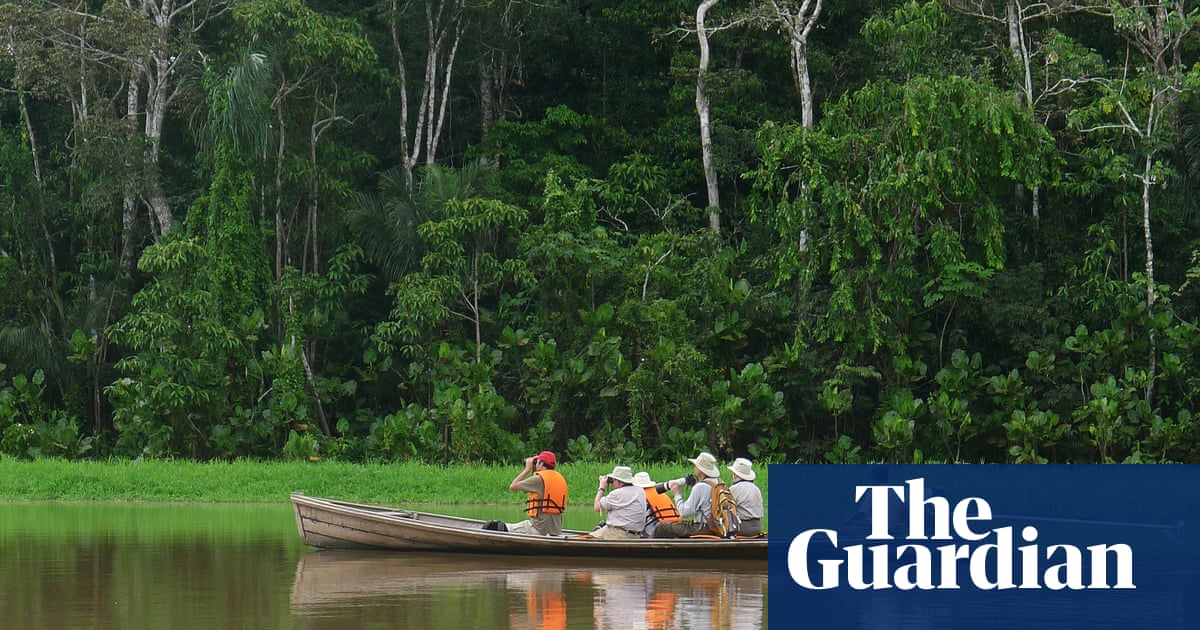The boatman drops me on a small wooden landing stage next to what I assume is the riverbank. “They’ll be here soon,” he says. “The lodge is up a creek and my boat can’t get there.” When he has gone, I clamber up on the bank and discover that I’m actually on an island. Orioles are perched on swaying stems of tall grass; a hawk and an osprey are watching for fish. Despite the drought-induced low water, the Amazon stretches far away to a distant shore and the smooth surface is occasionally split by a river dolphin rising for air. I have a moment of pure exhilaration. I am alone in the centre of the Amazon basin, unsure if I’m in Peru, Colombia or Brazil, but feeling that I’ve escaped such mundane concerns.
From the shimmering heat downstream a canoe appears, carrying two men. One sits upfront, a battered straw hat pulled down low over a wispy grey beard and round horn-rimmed spectacles. He looks like an intellectual who has spent a lifetime living in the remotest places on Earth. And that, as it turns out, is precisely what he is.
Diego Samper is not your usual Amazonian. As a teenager, he ran away from comfortable city life in Bogotá and spent two years alone on an island in a remote jungle river in Colombia. Exploring by canoe, he later discovered and bought the ruins of a merchant’s clapboard house dating back to the rubber boom of the early 20th century. “We called it Calanoa, spirit of the forest,” he tells me. After 12 years, his idyll ended when gold was discovered in the river outside. “In six months it went from heaven to hell,” he tells me. “Gold prospectors brought drugs and violence.” Then the Farc arrived, one-time leftist guerrillas turned criminal entrepreneurs. Diego and his young family fled. Two years later, they settled next to the Amazon, determined to build Calanoa 2 and tie its existence inseparably to improving the lives of local Indigenous people.
We motor against a strong current up a side creek. “This used to be the riverfront,” Diego says, “but the Amazon threw up a new island, so we’re now on a side creek.” It’s a reminder that Amazonia is naturally an ever-changing world. He points south, across the main river. “Not so far in that direction are tribes who are called ‘uncontacted’, although it’s more likely they are simply retreating from a world they…
Click Here to Read the Full Original Article at Travel | The Guardian…
